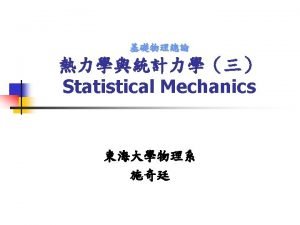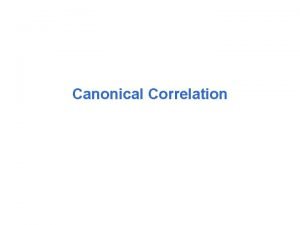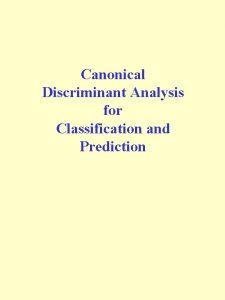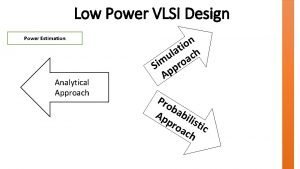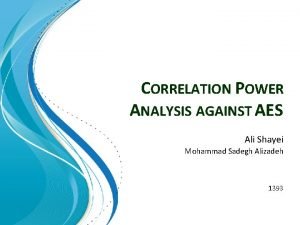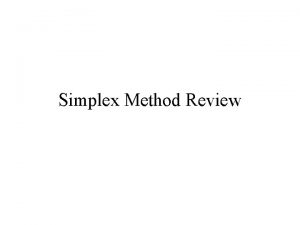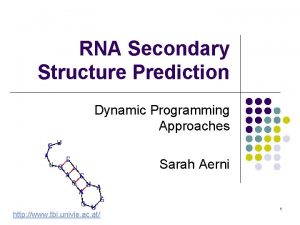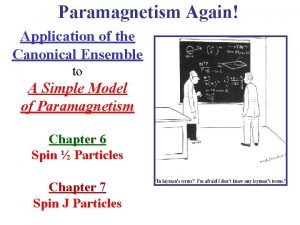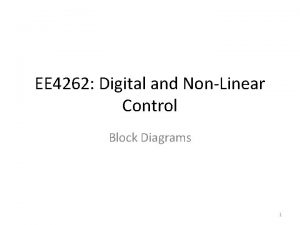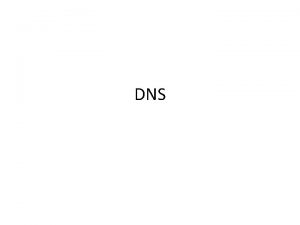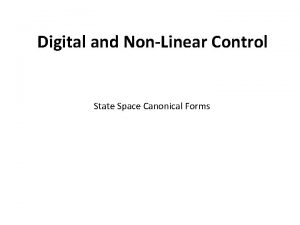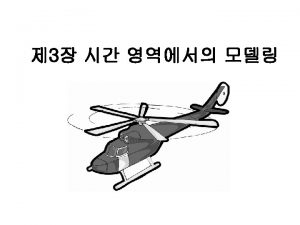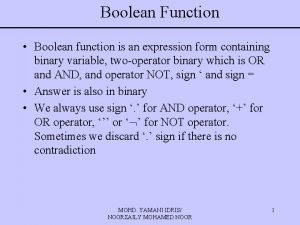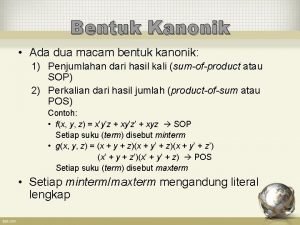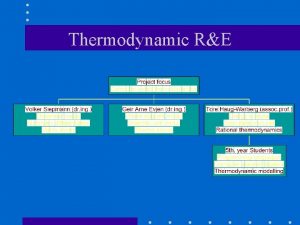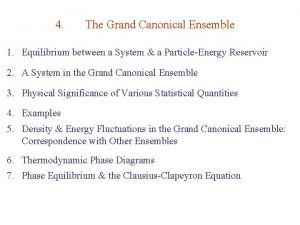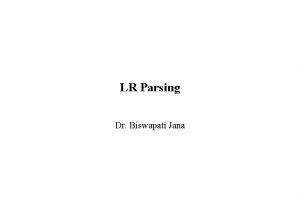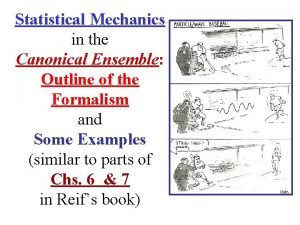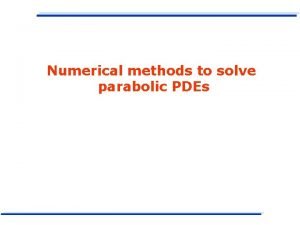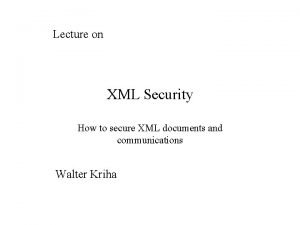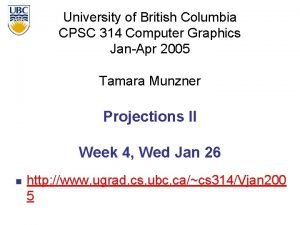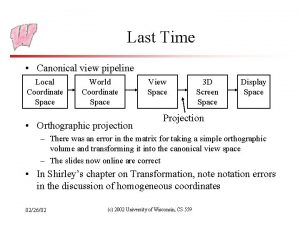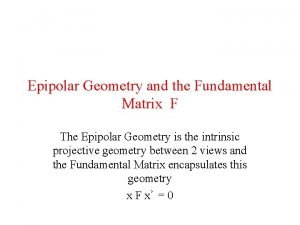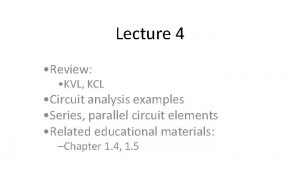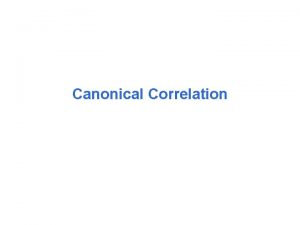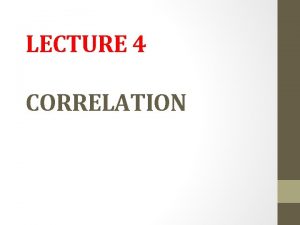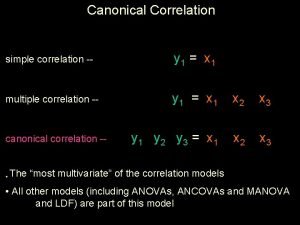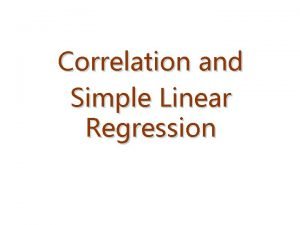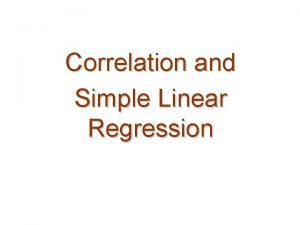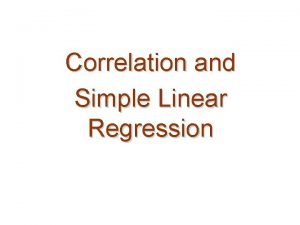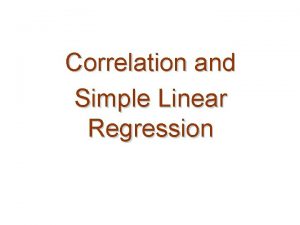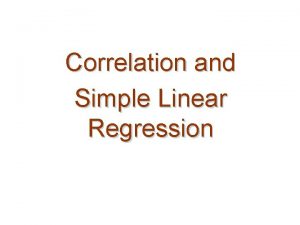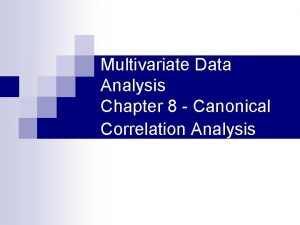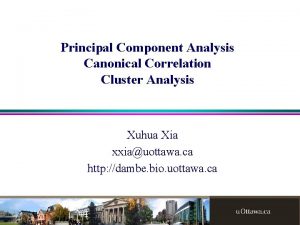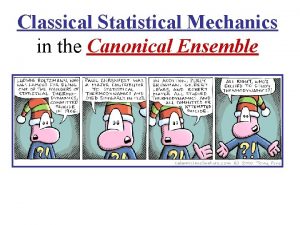Canonical Correlation Analysis ShyhKang Jeng Department of Electrical






















































- Slides: 54

Canonical Correlation Analysis Shyh-Kang Jeng Department of Electrical Engineering/ Graduate Institute of Communication/ Graduate Institute of Networking and Multimedia 1

Canonical Correlation Analysis Seeks to identify and quantify the association between two sets of variables Examples – Relating arithmetic speed and arithmetic power to reading speed and reading power – Relating government policy variables with economic goal variables – Relating college “performance” variables with precollege “achievement” variables 2

Canonical Correlation Analysis Focuses on the correlation between a linear combination of the variables in one set and a linear combination of the variables in another set First to determine the pair of linear combinations having the largest correlation Next to determine the pair of linear combinations having the largest correlation among all pairs uncorrelated with the initially selected pair, and so on 3

Canonical Correlation Analysis Canonical variables – Pairs of linear combinations used in canonical correlation analysis Canonical correlations – Correlations between the canonical variables – Measures the strength of association between the two sets of variables Maximization aspect – Attempt to concentrate a high-dimensional relationship between two sets of variables into a few pairs of canonical variables 4

Example 10. 5 Job Satisfaction 5

Example 10. 5 Job Satisfaction 6

Canonical Variables and Canonical Correlations 7

Canonical Variables and Canonical Correlations Covariances between pairs of variables from different sets are contained in S 12 or, equivalently S 21 When p and q are relatively large, interpreting the elements of S 12 collectively is very difficult Canonical correlation analysis can summarize the associations between two sets in terms of a few carefully chosen covariances rather than the pq covariances in S 12 8

Canonical Variables and Canonical Correlations 9

Canonical Variables and Canonical Correlations First pair of canonical variables – Pair of linear combinations U 1, V 1 having unit variances, which maximize the correlation kth pair of canonical variables – Pair of linear combinations Uk, Vk having unit variances, which maximize the correlation among all choices uncorrelated with the previous k-1 canonical variable pairs 10

Result 10. 1 11

Result 10. 1 12

Result 10. 1 13

Proof of Result 10. 1 14

Proof of Result 10. 1 15

Proof of Result 10. 1 16

Proof of Result 10. 1 17

Proof of Result 10. 1 18

Canonical Variates 19

Comment 20

Comment 21

Example 10. 1 22

Example 10. 1 23

Example 10. 1 24

Alternative Approach 25

Identifying Canonical Variables by Correlation 26

Example 10. 2 27

Canonical Correlations vs. Other Correlation Coefficients 28

Example 10. 3 29

Sample Canonical Variates and Sample Canonical Correlations 30

Result 10. 2 31

Matrix Forms 32

Sample Canonical Variates for Standardized Observations 33

Example 10. 4 34

Example 10. 5 Job Satisfaction 35

Example 10. 5 Job Satisfaction 36

Example 10. 5: Sample Correlation Matrix Based on 784 Responses 37

Example 10. 5: Canonical Variate Coefficients 38

Example 10. 5: Sample Correlations between Original and Canonical Variables 39

Matrices of Errors of Approximations 40

Matrices of Errors of Approximations 41

Matrices of Errors of Approximations 42

Example 10. 6 43

Example 10. 6 44

Example 10. 6 45

Sample Correlation Matrices between Canonical and Component Variables 46

Proportion of Sample Variances Explained by the Canonical Variables 47

Proportion of Sample Variances Explained by the Canonical Variables 48

Example 10. 7 49

Result 10. 3 50

Bartlett’s Modification 51

Test of Significance of Individual Canonical Correlations 52

Example 10. 8 53

Example 10. 8 54
 Canoncorr
Canoncorr Canonical clause definition
Canonical clause definition Ensemble grand n
Ensemble grand n Canonical correlation assumptions
Canonical correlation assumptions Positive correlation versus negative correlation
Positive correlation versus negative correlation Positive and negative correlation
Positive and negative correlation Discriminant analysis spss
Discriminant analysis spss Electrical engineering department
Electrical engineering department Tum
Tum Ucla systems engineering
Ucla systems engineering Correlation analysis deals with
Correlation analysis deals with Fungsi analisis korelasi
Fungsi analisis korelasi Correlation power analysis
Correlation power analysis Correlation power analysis
Correlation power analysis Correlation power analysis
Correlation power analysis Canonical form linear programming
Canonical form linear programming Canonical cover
Canonical cover Canonical base
Canonical base Application of canonical ensemble
Application of canonical ensemble Canonical form block diagram
Canonical form block diagram Http and dns
Http and dns Observable canonical form
Observable canonical form Controllable canonical form
Controllable canonical form Hamiltonian canonical equation
Hamiltonian canonical equation Sum of minterms
Sum of minterms Kanonik minterm
Kanonik minterm Canonical form digital logic
Canonical form digital logic Simplex standard form
Simplex standard form Canonical variables thermodynamics
Canonical variables thermodynamics Aws signature version 4
Aws signature version 4 Reduce the block diagram to canonical form
Reduce the block diagram to canonical form Phase variable canonical form
Phase variable canonical form Grand canonical ensemble
Grand canonical ensemble Canonical and standard forms
Canonical and standard forms Goto
Goto Canonical studies
Canonical studies Bulk modulis
Bulk modulis Parabolic partial differential equation
Parabolic partial differential equation Canonical xml
Canonical xml функция гамильтона
функция гамильтона Canonical view volume
Canonical view volume Canonical perspective
Canonical perspective Canonical view volume
Canonical view volume Essential matrix
Essential matrix Canonical view volume
Canonical view volume Canonical conjugate
Canonical conjugate Reti prefix
Reti prefix Laplace transform for circuit analysis
Laplace transform for circuit analysis Kvl kcl examples
Kvl kcl examples S-domain circuit analysis examples
S-domain circuit analysis examples Swot analysis for procurement department
Swot analysis for procurement department Swot analysis of hr manager
Swot analysis of hr manager Swot analysis for human resource department
Swot analysis for human resource department Swot analysis for internal audit
Swot analysis for internal audit Strategy development methods
Strategy development methods


